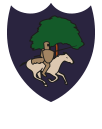Maths
Intent
Our aim at Tubbenden Primary School, is to ensure that all pupils, irrespective of gender, race and culture, are given the opportunity to develop their mathematical potential through a rich, engaging curriculum. We aim to develop lively, enquiring minds, encouraging pupils to become self-motivated, confident and capable in order to solve problems that will become an integral part of their future. We want them to be inquisitive and engaged learners who have a range of methods at their fingertips. We use our curriculum drivers- curiosity, creativity inclusivity and wider learning to lead our planning and ensure the children are exposed to a rich curriculum.
We want out children to really "master" their understanding of Mathematics and be able to make links with different concepts to support their calculations. Through this, we want to develop the mathematical language of the children and their ability to select different mathematical approaches and strategies to solve problems and to be able to provide the necessary skills for computation and recording to use them with understanding.
Language forms a large part of this, and we want to enhance their understanding and knowledge by ensuring exposure to and use of rich and challenging vocabulary and the use of stem sentences to help their understanding.
Implementation
White Rose planning is used as a main basis for all year groups, however, other well-respected resources are used are used along side this such as; Classroom Secrets and Power Maths. We also use online support such as the NRich website, NCETM support materials and Rising stars publications.
In EYFS, the children follow the new curriculum. They are concentrating on the Six areas of Mathematics; Cardinality and Counting, Comparison, Composition, Pattern, Shape and Space and Measure. They use the Numberblocks series to help cement concepts and for children to learn in an enjoyable way.
The units are split into terms and the curriculum is progressive as they move through. Concepts are built on both within the academic year and skills from the previous year. Manipulatives are used to help children expose the structure of the mathematics and to further support understanding and making links. Problem solving and reasoning tasks are used to deepen understanding of a secure concept. Vocabulary and Stem Sentences are also used to help children verbalise their learning.
An emphasis is placed on the learning of facts so that children become fluent to the point of automaticity in their knowledge and are able to solve increasingly complex problems or apply them to new situations and concepts. The children are exposed to different representations such as the Part-Whole model or the Bar model to help them scaffold their thinking, to help them to understand a problem or a question or to support some reasoning or an explanation.
Impact
Using the "Mastery" Approach, allows our children to become critical Mathematicians. They can make links easily and, using automatic fact recall, can apply their learning to a range of new situations and concepts. They can use appropriate representation or vocabulary to explain their thinking. They become fluid thinkers that can apply learning and solve unfamiliar problems. By deepening children's maths understanding, they will have a richer understanding rather than merely moving up through knowledge without a solid grounding. Teaching classes together also builds children's confidence in their mathematical understanding and their self-esteem.

